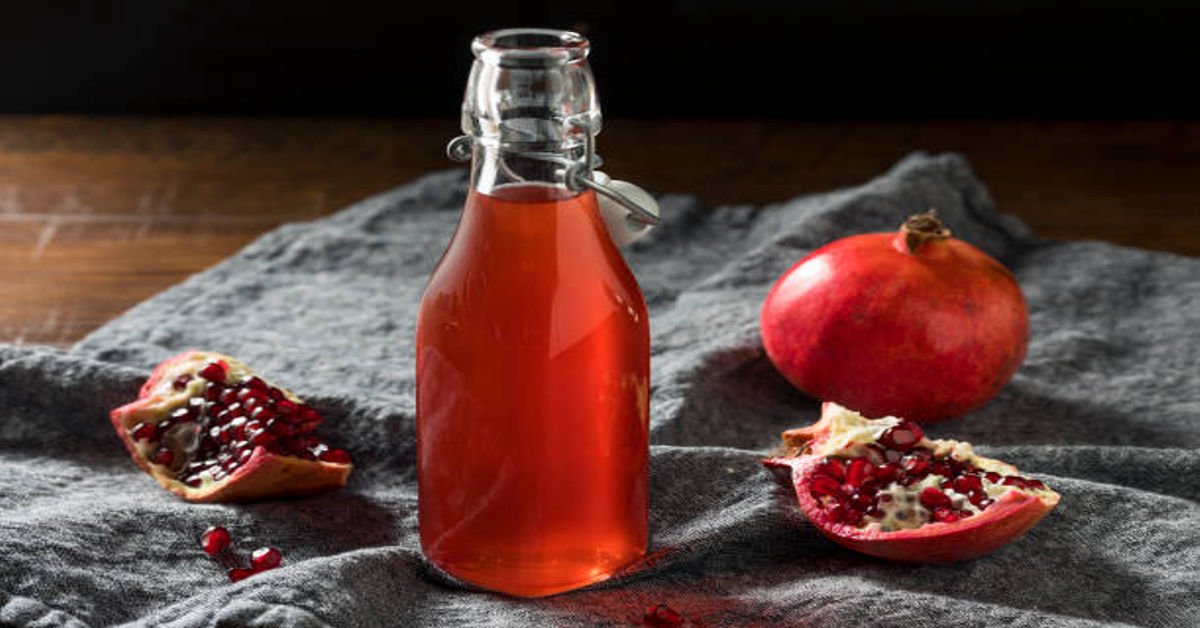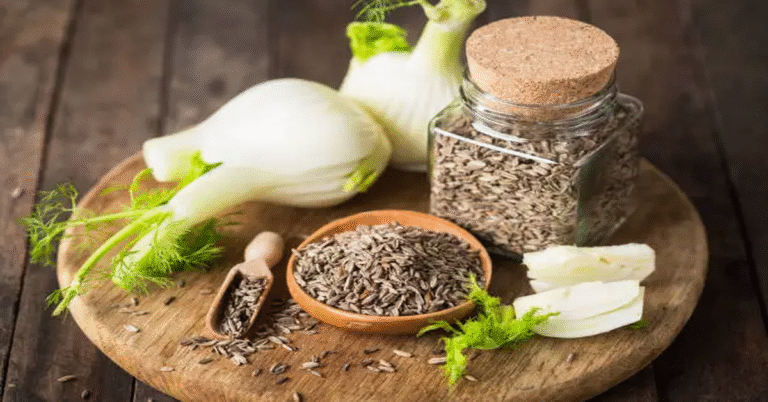
Grenadine is one of those rare culinary creations that blend beauty, flavor, and history in a single crimson drop. Known primarily as a syrup used in cocktails, mocktails, desserts, and even savory dishes, grenadine is far more than just a sweet red liquid. Its origins stretch back centuries, rooted in the Mediterranean and Middle Eastern regions where the pomegranate — the fruit that inspired its creation — was considered a symbol of life, fertility, and abundance. Over time, this vibrant syrup has evolved, crossing cultural and culinary borders to become a beloved ingredient in kitchens and bars around the world.
This article provides an in-depth exploration of grenadine: its origin, ingredients, preparation methods, traditional and modern uses, nutritional aspects, and health implications. It also clarifies common misconceptions about the syrup and examines how to choose or make authentic grenadine in a world dominated by artificial imitations.
1. Understanding Grenadine: Definition and Characteristics
Grenadine is a sweet, deep red syrup traditionally made from pomegranate juice, sugar, and sometimes lemon juice or orange blossom water for balance and fragrance. Its name comes from the French word grenade, meaning pomegranate. The syrup’s rich ruby hue and tangy-sweet flavor make it a versatile ingredient for both alcoholic and non-alcoholic beverages.
Despite popular belief, grenadine is not a cherry syrup, nor is it meant to taste like one. The confusion comes from commercial brands that replaced pomegranate with artificial flavorings and high-fructose corn syrup to reduce cost. Authentic grenadine has a complex flavor — sweet but with a tart undertone, fruity yet slightly floral, with a refreshing acidity that balances well with spirits or juices.
2. Historical Origins of Grenadine
The story of grenadine begins with the ancient cultivation of the pomegranate (Punica granatum), a fruit native to Persia and the Mediterranean basin. The pomegranate was cherished not only as food but also for its medicinal and symbolic value. Its juice was used in rituals, healing, and cooking for thousands of years.
As trade expanded during the Middle Ages, pomegranate-based syrups and cordials spread across Europe. French chefs and apothecaries began preparing concentrated pomegranate syrups as sweeteners and tonics. By the 17th and 18th centuries, the term “grenadine” had entered the culinary vocabulary of France and later other parts of Europe, referring specifically to a pomegranate reduction syrup used in drinks and desserts.
When grenadine reached the Americas in the late 19th century, it quickly became a favorite in emerging cocktail culture. Bartenders loved its vivid color and balanced sweetness, which enhanced drinks like the Tequila Sunrise, Shirley Temple, and Jack Rose. Over time, industrial production simplified grenadine with artificial coloring and corn syrup, but artisanal and homemade versions continue to honor its authentic roots.
3. Traditional Ingredients and Composition
The authentic version of grenadine is simple, made from natural fruit juice, sugar, and sometimes acid or aroma additives. The key lies in maintaining the right proportion and method of concentration.
Table 1: Core Ingredients in Traditional Grenadine
| Ingredient | Purpose | Effect on Flavor and Texture |
|---|---|---|
| Pomegranate Juice | Base flavor and color source | Tangy, fruity, slightly sour taste |
| Sugar (Cane Sugar) | Sweetener and preservative | Adds thickness and balance |
| Lemon Juice or Citric Acid | Stabilizer and flavor enhancer | Balances sweetness with acidity |
| Orange Blossom or Rose Water (optional) | Fragrance | Adds subtle floral aroma |
| Water (if needed) | Adjusts consistency | Prevents crystallization |
The proportion of pomegranate juice to sugar typically ranges from 2:1 to 1:1, depending on desired thickness and sweetness. Heating is used to dissolve sugar and concentrate the juice, though some traditional recipes rely on cold infusion to preserve raw flavor and antioxidants.
4. How Grenadine Is Made: Traditional and Modern Methods
There are two main approaches to making grenadine — traditional (artisan) preparation and industrial (commercial) production.
A. Traditional Preparation
Traditional grenadine is usually handcrafted in small batches. Fresh pomegranate juice is extracted from the seeds, filtered, and gently heated with sugar until it thickens into a syrupy texture. Lemon juice or a natural acid is added to balance sweetness. Some versions include orange blossom water for fragrance. The mixture is then cooled and bottled in sterilized glass containers.
B. Commercial Production
In mass-market production, natural ingredients are often replaced by artificial colorants (red dyes), corn syrup, and synthetic fruit flavors. These are cheaper but lack the authentic taste and health properties of real grenadine. Some modern artisanal brands have returned to using real pomegranate and natural sweeteners like cane sugar or agave.
Table 2: Comparison Between Traditional and Commercial Grenadine
| Aspect | Traditional Grenadine | Commercial Grenadine |
|---|---|---|
| Base Ingredient | Real pomegranate juice | Artificial flavors and corn syrup |
| Color Source | Natural pomegranate pigments | Red dye No. 40 or similar |
| Sweetness Level | Moderate, balanced | Very high and sugary |
| Shelf Life | 3–6 months (refrigerated) | Up to 2 years (with preservatives) |
| Nutritional Quality | Contains antioxidants | Minimal or none |
| Taste Profile | Tart-sweet and fruity | Overly sweet and artificial |
Authentic grenadine retains a subtle tartness and aromatic depth that distinguishes it from sugary imitations.
5. Culinary and Beverage Uses of Grenadine
Grenadine’s versatility is one of its greatest strengths. It is used in cocktails, mocktails, sodas, desserts, sauces, and even savory dishes. Its balance of sweetness and acidity makes it a flexible addition that enhances color, flavor, and aroma.
A. In Cocktails and Mocktails
Grenadine’s most common application is in drinks. Its bright red color creates beautiful layering effects, and its flavor pairs well with citrus, tropical fruits, and strong spirits. Popular drinks include:
Table 3: Classic Beverages Made with Grenadine
| Drink Name | Type | Ingredients Overview | Grenadine Role |
|---|---|---|---|
| Tequila Sunrise | Alcoholic | Tequila, orange juice, grenadine | Adds color gradient and sweetness |
| Shirley Temple | Non-alcoholic | Ginger ale or lemon-lime soda, grenadine, cherry garnish | Provides signature red hue |
| Jack Rose | Alcoholic | Apple brandy, lemon juice, grenadine | Balances tart and sweet tones |
| Roy Rogers | Non-alcoholic | Cola and grenadine | Creates a fruity twist on cola |
| Pink Lady | Alcoholic | Gin, cream, grenadine | Adds sweetness and soft pink tone |
B. In Culinary Recipes
Beyond drinks, grenadine enhances desserts, glazes, marinades, and dressings. It can be drizzled over pancakes, yogurt, or ice cream, or used to glaze meats like duck or pork. Its acidity makes it excellent for balancing richness in sauces.
Example Culinary Applications:
- Grenadine glaze for roasted vegetables or poultry
- Fruit salad dressing for added brightness
- Layered jelly desserts for visual appeal
- Baking ingredient in cakes, cupcakes, or macarons for color and flavor
C. In Global Cuisine
Grenadine is found in various world cuisines:
- In French and Mediterranean cooking, it appears in desserts and beverages.
- In Caribbean culture, it is mixed with tropical juices and rum.
- In Middle Eastern cuisine, it resembles pomegranate molasses — thicker and tangier but used similarly.
6. Nutritional Composition of Grenadine
Grenadine is primarily a sweetener, so it contains significant sugar content. However, when made with natural pomegranate juice, it also retains some beneficial nutrients and antioxidants.
Table 4: Approximate Nutritional Values (per tablespoon, 20g)
| Nutrient | Traditional Grenadine (Natural) | Commercial Grenadine (Artificial) |
|---|---|---|
| Calories | 50–60 kcal | 60–80 kcal |
| Carbohydrates | 13–15 g | 16–18 g |
| Sugars | 12–14 g | 16–18 g |
| Vitamin C | Trace to 2 mg | Negligible |
| Potassium | 20–30 mg | Minimal |
| Antioxidants | High (polyphenols) | Very low |
| Artificial Additives | None | Present (color, flavor) |
While grenadine is not a health drink, authentic versions made from natural juice can provide minor nutritional benefits due to pomegranate’s bioactive compounds, including ellagic acid and anthocyanins — known for their antioxidant and anti-inflammatory properties.
7. Health Aspects: Benefits and Precautions
Grenadine, especially when homemade or natural, can offer some health-related advantages, but moderation is key due to its sugar content.
Potential Health Benefits:
- Rich in Antioxidants: Natural pomegranate grenadine retains compounds that help neutralize free radicals and support cardiovascular health.
- Digestive Aid: The acidity from lemon or pomegranate can mildly stimulate digestion.
- Mood Enhancer: The color red is psychologically associated with vitality and energy, and the sweet-tart flavor can uplift the senses.
- Hydration Support: When diluted in beverages, grenadine adds electrolytes and flavor, encouraging more fluid intake.
Health Precautions:
- High Sugar Content: Overconsumption contributes to weight gain and blood sugar spikes.
- Artificial Additives: Commercial grenadine may contain dyes and preservatives that cause allergic reactions or hyperactivity in sensitive individuals.
- Dental Health: Like any sugary syrup, it can erode enamel if consumed excessively.
Thus, the healthiest way to enjoy grenadine is through homemade preparation, using fresh pomegranate juice and minimal added sugar.
8. Making Homemade Grenadine
Creating grenadine at home is simple and rewarding. It allows control over ingredients, sweetness, and freshness.
Basic Homemade Grenadine Recipe
| Ingredient | Quantity |
|---|---|
| Pomegranate juice | 2 cups |
| Sugar | 1 cup |
| Lemon juice | 1 tablespoon |
| Orange blossom water (optional) | ½ teaspoon |
Preparation Steps:
- Combine pomegranate juice and sugar in a saucepan.
- Warm over medium heat, stirring until sugar dissolves.
- Reduce to low heat and simmer gently for 10–15 minutes to thicken.
- Add lemon juice and optional orange blossom water for balance.
- Cool completely, pour into sterilized bottles, and refrigerate.
Storage: Keep sealed in the refrigerator for up to 3 months.
Homemade grenadine tastes fresher, maintains natural antioxidants, and avoids synthetic chemicals.
9. The Chemistry of Grenadine’s Color and Flavor
The vibrant red color of grenadine comes from anthocyanins — natural pigments in pomegranate that are sensitive to pH. In acidic environments (such as when lemon juice is added), anthocyanins appear bright red; in neutral or basic environments, they turn purple or blue. This chemistry explains why grenadine retains its striking color in acidic cocktails.
The syrup’s flavor balance arises from the interaction between fructose (sweetness) and citric or malic acids (tartness). The aromatic notes from orange blossom or rose water enhance its sensory depth, creating a multilayered taste that lingers on the palate.
10. Cultural Symbolism of Grenadine
Beyond its taste, grenadine holds cultural and emotional symbolism. The pomegranate, from which grenadine originates, has long represented life, rebirth, fertility, and prosperity across civilizations.
- In Persian and Greek mythology, the pomegranate is linked to the cycle of life and death.
- In Jewish tradition, it symbolizes righteousness and abundance.
- In modern culture, grenadine’s red hue evokes passion, joy, and celebration — fitting for festive drinks and romantic desserts.
11. Grenadine in Modern Mixology and Gastronomy
Contemporary chefs and mixologists have rediscovered grenadine’s potential beyond classic cocktails. In modern gastronomy, it appears in:
- Foams and gels for molecular cuisine presentations
- Fermented beverages or kombuchas for natural color
- Savory reductions with vinegar and herbs for complex sauces
Bartenders also experiment with grenadine made from alternative fruits like cherry, raspberry, or hibiscus, inspired by the original concept but adding new flavor dimensions. Yet, pomegranate-based grenadine remains the benchmark for authenticity.
12. Substitutes and Variations
When authentic grenadine is unavailable, other syrups or juices can be substituted, though each imparts a slightly different profile.
Table 5: Common Substitutes for Grenadine
| Substitute | Flavor Profile | Use Case |
|---|---|---|
| Pomegranate Molasses (diluted) | Tangy, concentrated | Cooking sauces or glazes |
| Raspberry Syrup | Sweet and fruity | Drinks and desserts |
| Cherry Syrup | Sweet, dark | Soda and mocktails |
| Cranberry Juice (with sugar) | Tart and refreshing | Low-calorie cocktails |
| Hibiscus Syrup | Floral and tangy | Exotic beverages |
These alternatives mimic grenadine’s sweet-tart nature but may lack its balance or color intensity.
13. Economic and Global Market Aspects
Grenadine has become a global product, with widespread demand across beverage industries. The global syrup market values grenadine for its color stability, versatility, and broad appeal. Artisanal producers have emerged in regions like France, Italy, and California, focusing on organic, small-batch grenadine made with pure pomegranate juice.
Economic growth in the hospitality and beverage sectors further fuels its popularity. However, competition with cheap, synthetic syrups remains a concern, as they dominate supermarket shelves despite lacking authenticity.
14. Storing and Preserving Grenadine
Proper storage ensures freshness, flavor, and safety.
Storage Guidelines:
- Keep grenadine in airtight glass bottles to prevent oxidation.
- Store in a cool, dark place or refrigerate after opening.
- Avoid metal containers, as acidity may react with them.
- If homemade, consume within three months for best quality.
Signs of Spoilage: Cloudiness, off odor, or fermentation bubbles indicate that the syrup should be discarded.
15. Environmental and Ethical Considerations
As pomegranate cultivation expands to meet demand, sustainable farming becomes essential. Ethical grenadine production involves:
- Using organically grown pomegranates to reduce pesticide residues.
- Supporting local farmers in Mediterranean and subtropical regions.
- Reducing plastic packaging by opting for glass bottles.
- Avoiding artificial dyes and preservatives to protect health and environment.
Consumers can contribute by purchasing from responsible brands or making grenadine at home with locally sourced fruit.
16. Conclusion: The Everlasting Appeal of Grenadine
Grenadine stands as a timeless ingredient — a sweet, ruby-colored symbol of both history and creativity. From ancient pomegranate groves to modern cocktail bars, it carries the essence of transformation: turning the humble fruit into a versatile syrup that delights the senses and connects cultures. Whether drizzled over desserts, mixed into sparkling drinks, or crafted lovingly at home, grenadine adds a touch of art to everyday life.
Authentic grenadine reminds us that simplicity and purity often yield the greatest pleasures. It embodies balance — between sweet and tart, tradition and innovation, nourishment and indulgence. In every drop lies a story: of ancient gardens, curious explorers, and modern artists who continue to rediscover the magic of the lost red nectar.
FAQs
1. What exactly is grenadine made of?
Authentic grenadine is made from pomegranate juice, sugar, and lemon juice. Some recipes include orange blossom or rose water for fragrance.
2. Is grenadine alcoholic?
No, grenadine itself is non-alcoholic. It’s a syrup used in both alcoholic and non-alcoholic drinks to add flavor and color.
3. Why is most commercial grenadine so sweet?
Commercial versions often replace natural pomegranate juice with corn syrup and artificial flavoring, making them overly sweet and less authentic.
4. Can grenadine be healthy?
When made from natural pomegranate juice, grenadine can contain antioxidants, but it should still be consumed moderately due to high sugar content.
5. How can I make grenadine at home?
Combine pomegranate juice and sugar in a saucepan, simmer until thick, add lemon juice, cool, and store in a sealed bottle.







